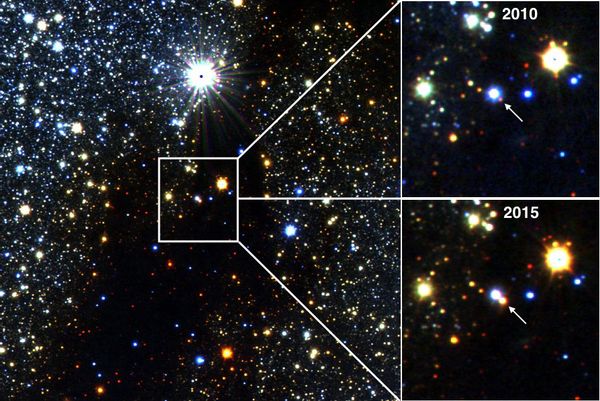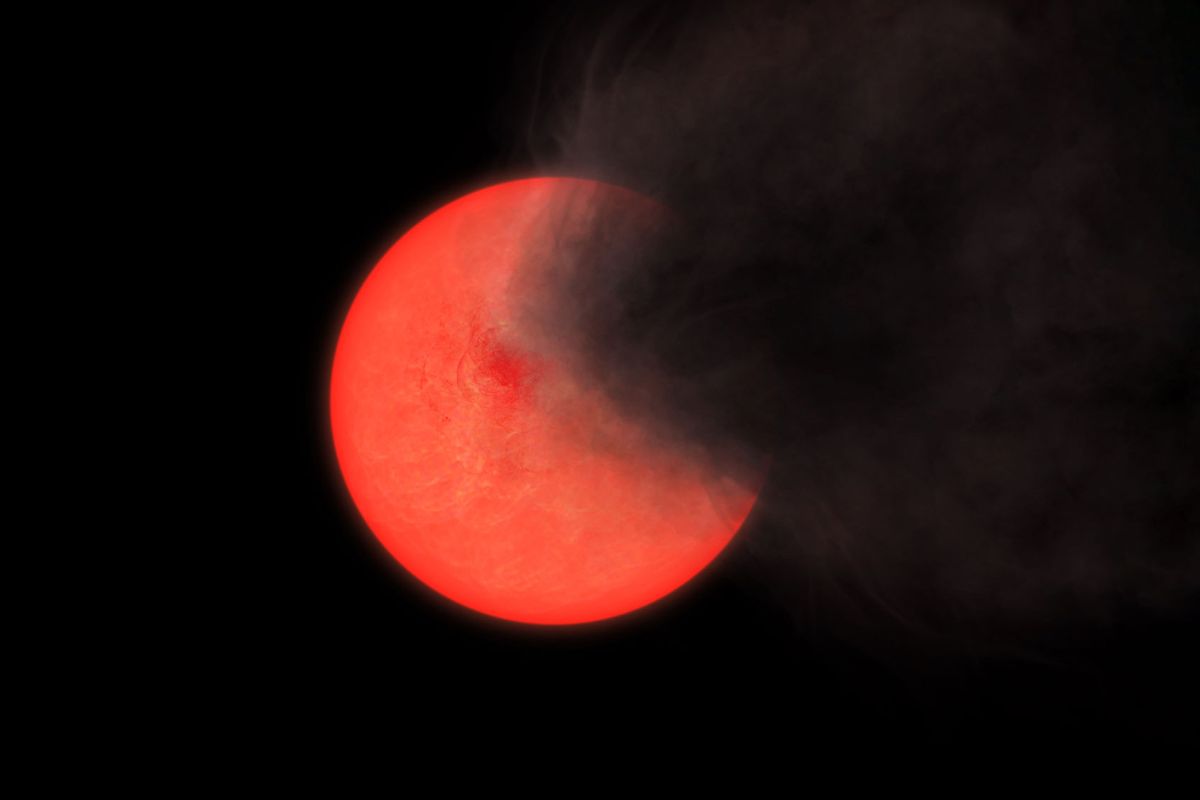After a decade spent monitoring the sky, an international team of astronomers have discovered a nursery of newborn stars, along with an entirely new type of elder star that has been hidden at the heart of our galaxy — and which may solve a mystery about the formation of new elements in the universe.
Published in the Monthly Notices of the Royal Astronomical Society, four new research papers detail the fruit of a 10-year survey of hundreds of millions of stars conducted at the Cerro Paranal Observatory in the Chilean Andes. Using the observatory’s massive, high-powered Visible and Infrared Survey Telescope (VISTA), researchers notice that 222 of those many-millions of stars were acting odd, and flashing dramatically in strange patterns.
The team slowly whittled down the list of possible issues. About two-thirds of the stars were easy to classify as well-understood events of various types, researchers said. But the others stars were harder to read. What the scientists needed was to spread the light out along different wavelengths and determine, for each one, which parts of its spectrum had the most light. They needed to bring out the big guns.
"These outbursts happen in the slowly spinning disc of matter that is forming a new solar system."
That’s when then the team turned to the ESO’s aptly-named Very Large Telescope. And to the University of Valparaiso’s Dr Zhen Guo, who headed up the team’s work on the spectra, whose goal was to discover one of these newborn stars throwing a tantrum.
"Our main aim was to find rarely-seen newborn stars, also called protostars, while they are undergoing a great outburst that can last for months, years, or even decades. These outbursts happen in the slowly spinning disc of matter that is forming a new solar system. They help the newborn star in the middle to grow, but make it harder for planets to form,” said Guo in an RAS release. “We don't yet understand why the discs become unstable like this."
 This star gradually brightened 40-fold over the course of two years and has remained bright since 2015. This infrared image shows what we would see if our eyes were sensitive to wavelengths three times longer than visible light. (Philip Lucas/University of Hertfordshire)
This star gradually brightened 40-fold over the course of two years and has remained bright since 2015. This infrared image shows what we would see if our eyes were sensitive to wavelengths three times longer than visible light. (Philip Lucas/University of Hertfordshire)
That instability would be the marquee signal of the team’s discovery — 32 newborn protostars whose eruptions increased in brightness at least 40-fold, and in some cases over 300-fold. As remarkable as it may be for astronomers to capture a veritable nursery of newborn stars, an even more surprising discovery emerged when 21 mysterious red stars came into view. Seated at the center of the Milky Way galaxy and giving off a mysterious pattern of their own, these stars were shrouded in something peculiar.
Professor Philip Lucas, of the University of Hertfordshire, led the international team of researchers. In a release, Lucas said he wasn’t sure if the strange stars “were protostars starting an eruption, squalling newborns if you will, or recovering from a dip in brightness caused by a disc or shell of dust in front of the star. A third option was that they were older giant stars throwing off matter in the late stages of their life, puffing out gas like old smokers.”
The team dug into the spectra further, honing in on seven of the 21 space oddities, and compared them to data from earlier astronomical surveys around the world. Their exciting conclusion became apparent: this strange group in the nursery weren’t newborns like the others, but grandparents. And an entirely new type of star altogether.
Want more health and science stories in your inbox? Subscribe to Salon's weekly newsletter Lab Notes.
The founder of the decade-long survey, Professor Dante Minniti of Andrés Bello University in Chile, described the ancestral giants in the Royal Astronomical Society’s announcement.
"These elderly stars sit quietly for years or decades and then puff out clouds of smoke in a totally unexpected way. They look very dim and red for several years, to the point that sometimes we can't see them at all," he said.
This strange group in the nursery weren’t newborns like the others, but grandparents. And an entirely new type of star altogether.
As in real estate, so in astronomy — location is everything. And the Old Smokers’ location is one reason scientists are able to determine the age and significance of the giant stars. Their dwindling light lives in the nuclear stellar disc, the innermost part of the Milky Way and the center of its spiraling arms. And that’s where we usually find the heaviest, densest elements in galaxy.
"Matter ejected from old stars plays a key role in the life cycle of the elements, helping to form the next generation of stars and planets," Lucas said. “This was thought to occur mainly in a well-studied type of star called a Mira variable. However, the discovery of a new type of star that throws off matter could have wider significance for the spread of heavy elements in the Nuclear Disc and metal-rich regions of other galaxies."
The ESO’s Very Large Telescope's is an increasingly critical tool in the discovery of celestial births. By using the telescope’s Spectro-Polarimetric High-contrast Exoplanet REsearch (SPHERE) instrument last July, a different team of scientists at the observatory were able to photograph the birth of a new planet for the first time in history.
"This discovery is truly captivating as it marks the very first detection of clumps around a young star that have the potential to give rise to giant planets," said researchers at the time.
Since coming online in 2022, the James Webb Space Telescope has similarly opened up a rush of new astronomical discoveries never before possible, including the infrared analysis of newborn stars like those discovered by Lucas’ team. As the Very Large Telescope gave us the first glimpse in July of a planet being born, the Webb telescope in the same month brought researchers around the world a new understanding of how newborn protostars operate on a molecular level.
We need your help to stay independent
"The research reveals that the very youngest stars appear to emit beams of almost pure molecules, contrary to what astronomers thought before,” scientists said during the Webb discovery last year. “How such beams are produced without the added ingredients of atoms and ions, is currently a mystery."
That mystery is why studying Old Smoker and others of his generation is a crucial part of astronomy’s new aims. The quest to discover our chemical and elemental lineage — the very origins of all matter in the universe — is an exciting one, and scientists at the forefront of that quest are now finding answers in the light-spectrum signatures of the oldest stars that ever existed.
Using high-powered telescopes like the VISTA, Very Large Telescope and the Webb, researchers are advancing our knowledge of the stars at unprecedented speed — letting us see further back in time, deeper in into our collective history with more definition than ever before.



Shares